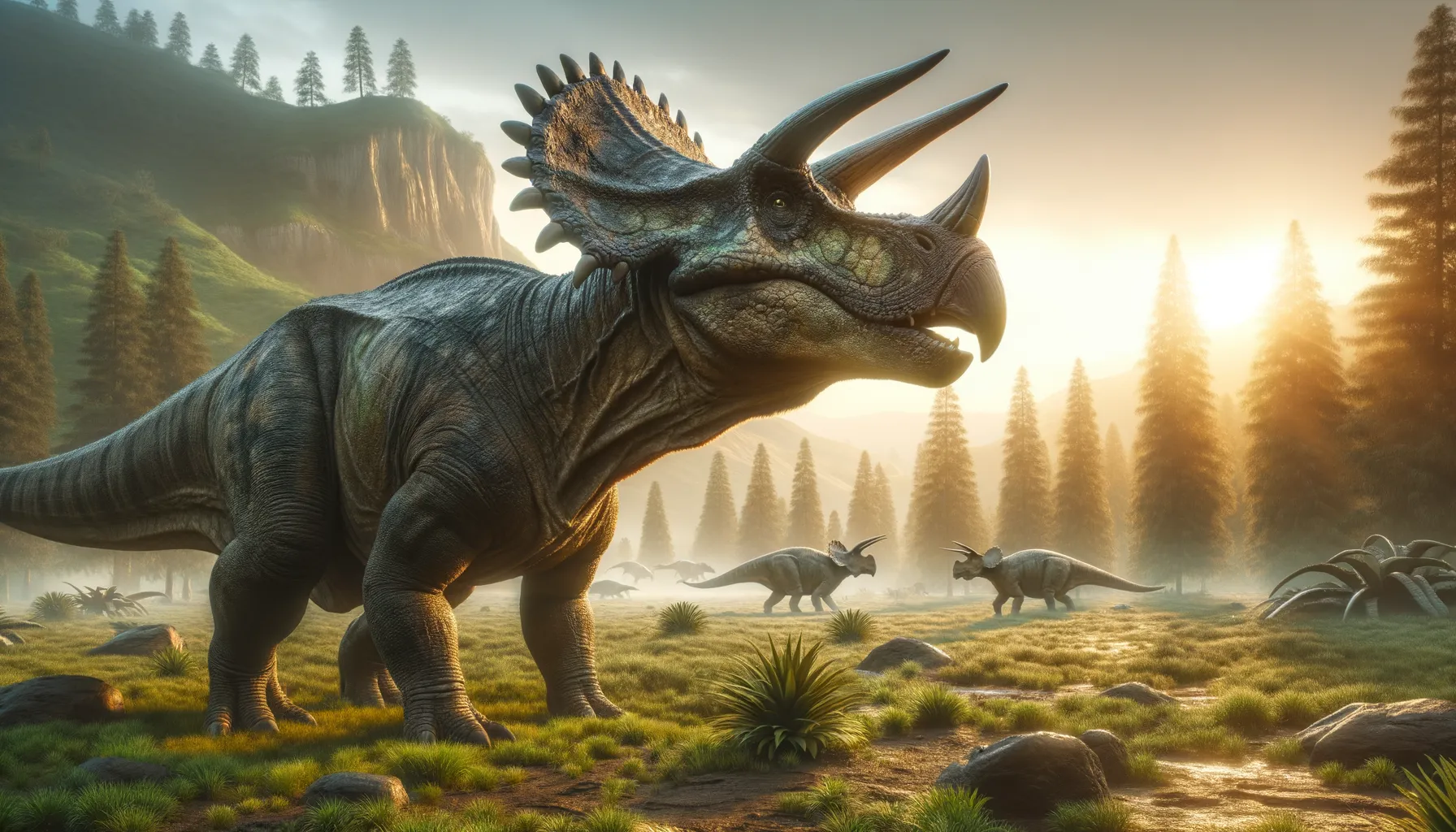
Monoclonius
The majestic single-horned marvel.
Period
Cretaceous
Length
Roughly 16 to 20 feet long.
Height
Approximately 6 feet at the shoulders.
Weight
Around 3,000 to 4,000 pounds.
Monoclonius was a medium-sized herbivorous dinosaur that lived during the Late Cretaceous period. This dinosaur is known for its single large horn above the nose and a frilled neck shield, which it likely used for defense and display purposes. It roamed the ancient floodplains in present-day North America and was a relative of the famous Triceratops.
Diet
Monoclonius was a herbivore, feeding primarily on the lush vegetation available in its habitat. Its diet likely consisted of ferns, cycads, and conifers, as flowering plants were not as prevalent during its time.
Hunting
As a herbivore, Monoclonius did not hunt. Instead, it used its beak to clip leaves and plants efficiently. Its teeth were adapted for grinding plant material rather than tearing meat.
Environmental challenges
Monoclonius faced environmental challenges such as changing climates and shifting landscapes during the Late Cretaceous. It had to adapt to fluctuations in temperature and humidity, which affected the availability of food. Competition for resources with other herbivores in its ecosystem was also a constant challenge. Predatory threats from large carnivorous dinosaurs made vigilance and defensive behavior crucial for survival.
Speed
Relatively slow-moving due to its size.
Lifespan
Estimated to have lived up to 30 years.
First discovery
Discovered in 1876 by Edward Drinker Cope.
Fun Facts
- Monoclonius was a dinosaur that lived during the Late Cretaceous period, around 75 million years ago.
- Its name, Monoclonius, means 'single sprout', which refers to the single horn on its nose.
- Monoclonius was a ceratopsian, a group of herbivorous dinosaurs known for their impressive horns and frills.
- This dinosaur was about 20 feet long and weighed around 2 tons, roughly the size of a car.
- Monoclonius probably lived in herds, which would have helped protect them from predators like tyrannosaurs.
- Fossils of Monoclonius have mostly been found in what is now Montana in the United States.
- Though it is often depicted with a single nose horn, some paleontologists debate if Monoclonius is a distinct species or a younger form of another ceratopsian like Centrosaurus.
Growth and Development
Monoclonius showed significant growth from hatchlings to full size, with rapid development during its juvenile years. The species likely underwent changes in its physical appearance as it matured, such as the development of its horn and frill. These features might have played a role in mating displays or social interactions. Like many dinosaurs, Monoclonius grew over several years to reach adulthood.
Habitat
Monoclonius inhabited floodplains and forested regions in what is now North America. The area was rich in rivers and vegetation, providing ample food and water sources. Its habitat supported a diverse range of species, both flora and fauna, allowing for a balanced ecosystem. Seasonal changes in water levels and plant growth influenced migratory and feeding patterns.
Interaction with other species
Monoclonius lived alongside a variety of dinosaur species, including both herbivores and carnivores. It likely formed herds for protection against predators and to increase its survival chances. Territorial disputes with other herbivorous species over feeding grounds may have occurred. Cooperative behaviors might have developed within its herd, particularly in defense and migration.
Natural lifespan
Monoclonius could live to be around 30 years old naturally.
Reproduction
Monoclonius reproduced by laying eggs in nesting grounds, likely in communal areas. Females may have carefully selected nesting sites with favorable conditions for incubation. Parental care, if present, would have included guarding the nests from predators and ensuring the young's safety. Hatchlings were vulnerable and required protection until they could fend for themselves.
Social behaviour
Monoclonius was probably a social animal, forming groups or herds, which provided safety in numbers. Within these groups, individuals might have established social hierarchies or roles. Social interactions could have included cooperative defense strategies and communication through vocalizations or physical displays. The species' social structure was vital for survival against environmental and predatory pressures.
Fossil locations
Fossils of Monoclonius have primarily been found in Montana, United States. These discoveries have helped scientists understand more about its lifestyle and environment. The region it inhabited was rich in fossil records, offering insights into the Late Cretaceous ecosystem. Fossil evidence continues to provide valuable information for paleontologists studying the diverse dinosaur species of this period.
